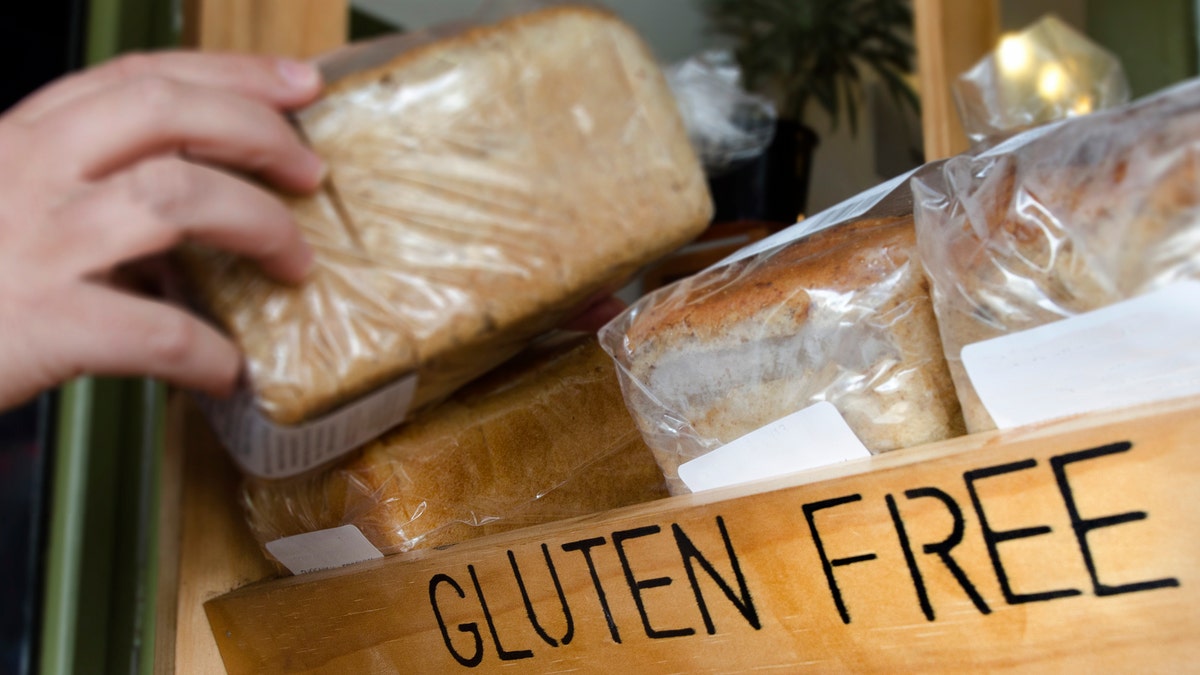
A woman hand picks up a Gluten Free loaf of bread. (iStock)
It’s one of the biggest diet trends to ever sweep the nation.
Restaurants now offer special menu items of it and Whole Foods dedicates an entire aisle to it. We’ve heard it’s healthier, will make us thin, and give us more energy, too. We are going gluten-free!
A food or diet advertised as gluten-free typically gives the impression that it’s healthier, and great for weight loss. This is the gluten-free gimmick and if you haven’t fallen for it in the slightest bit once or twice, then good for you, because the food industry and media push this reputation pretty hard. The problem is, when some people try gluten-free diets, weight gain is actually the result.
Gluten-intolerant people can enjoy an abundance of health benefits when they go gluten-free. Avoiding gluten in cases of intolerance is linked to positive psychological and physical benefits.
For those who aren’t intolerant, however, following a gluten-free diet can mean an overload of refined carbohydrates, and as a result, sluggish energy and weight gain. After all, French fries, soda and lard are all gluten-free!
With that being said, it is possible to go gluten-free and still lose weight. Here’s how:
1) Run Away from the Gluten-Free Aisle
“Gluten-free” does not equal “healthy,” nor does it equal “healthy for weight loss.” Just because a product is gluten-free does NOT mean it is healthy.
When approaching a gluten-free diet, people often simply replace gluten-full foods like pasta and bread and replace them with their gluten-free counterpart products, like gluten-free pasta, gluten-free bread, pretzels, cake mix, cookies etc - the list goes on. Such products are typically marketed as “healthy.”
Avoid these foods. Gluten-free specialty products usually use corn or potato starch, instead of wheat, so they’re just as high in carbohydrates as their gluten-containing counterparts. Instead, use following a gluten-free diet as an opportunity to introduce more whole foods into your meals.
2) Find High Fiber Varieties of Gluten-Free Products
What does “gluten-free” usually equal? Fiber-free. One major flaw of a gluten-free diet is the lack of fiber. Also, when the gluten is removed from products, fiber and B vitamins often go with it. Fiber helps keep us full, boost our metabolism, and control our blood sugar levels, all of which can aid in sustained energy and weight loss.
High fiber and minimally processed gluten-free products include those made with psyllium husk, flax seeds, and chia seeds. All of these are naturally gluten-free and an easy way to add fiber to your diet. Gluten-free specialty products made with these ingredients may also be a better choice than those made with brown rice flour. Check the labels to find the products with the most fiber.
3) Incorporate Non-Starchy Veggies
Instead of replacing gluten with other energy-dense foods, take the gluten-free diet as an opportunity to introduce more whole foods into your life. Next time you’re in the supermarket, spend more time in the produce aisle.
All non-starchy vegetables are naturally gluten-free, low calorie, and provide you with the fiber you’re missing from the omitted whole-grains. Some non-starchy vegetables include salad greens, artichokes, tomatoes, onions, beets, carrots and most green vegetables. At breakfast, add a mix of spinach, tomatoes, and onions to your egg scramble. At lunch, load your salad with artichokes, kale, peppers, tomatoes, hearts of palm, carrots, and beets. And at dinner, swap pasta for zucchini noodles topped with tomato sauce and ground turkey.
4) Stick to a Serving
You can also replace bread, pasta, and oats with naturally gluten free starches like sweet potato, spaghetti squash, butternut squash, parsnips, quinoa and brown rice. However, these foods are a concentrated source of carbohydrates, so the amount you eat is important.
Restaurants typically serve up massive portions of grains because they are cheap to produce and expensive to sell. A quinoa bowl with 2 cups of quinoa and sweet potatoes is equivalent in carbohydrates to eight slices of white bread. Remember to stick to a serving of these starchy vegetables and gluten-free grains. A serving of quinoa and brown rice is 1/3 cup, and a serving of sweet potato 1/2 cup, and a serving of squash is a cup.
5) Replace Buckwheat with Baked Apples
Use your gluten elimination diet as an excuse to eat real foods by making it a baked good elimination diet too! Fruits are another naturally gluten-free food that can add fiber to your diet while satisfying your sweet tooth. Consider adding a cup of raspberries to breakfast to boost the fiber content by 8 grams, or dip strawberries in dark chocolate for a gluten-free dessert option. Other ideas include stuffing raspberries with dark chocolate chips, or making baked apples with cinnamon.
